Are you torn between a magnolia bush or tree for your garden? One key area for both is proper pruning and shaping. We've researched how to shape magnolia trees and bushes so you don't have to. Here's what we found:
Shaping a magnolia tree and bush does not differ much. You will need the same pruning tools to shape them both. Despite that, bushes demand more frequent pruning than trees to maintain their size and volume. However, tall trees call for an extendable pole and a ladder.
In this post, we have a detailed discussion on pruning magnolias. We'll also explore other related topics, such as their primary care, types, pros and cons, uses, and best companions plants. So, please keep on reading to learn more.
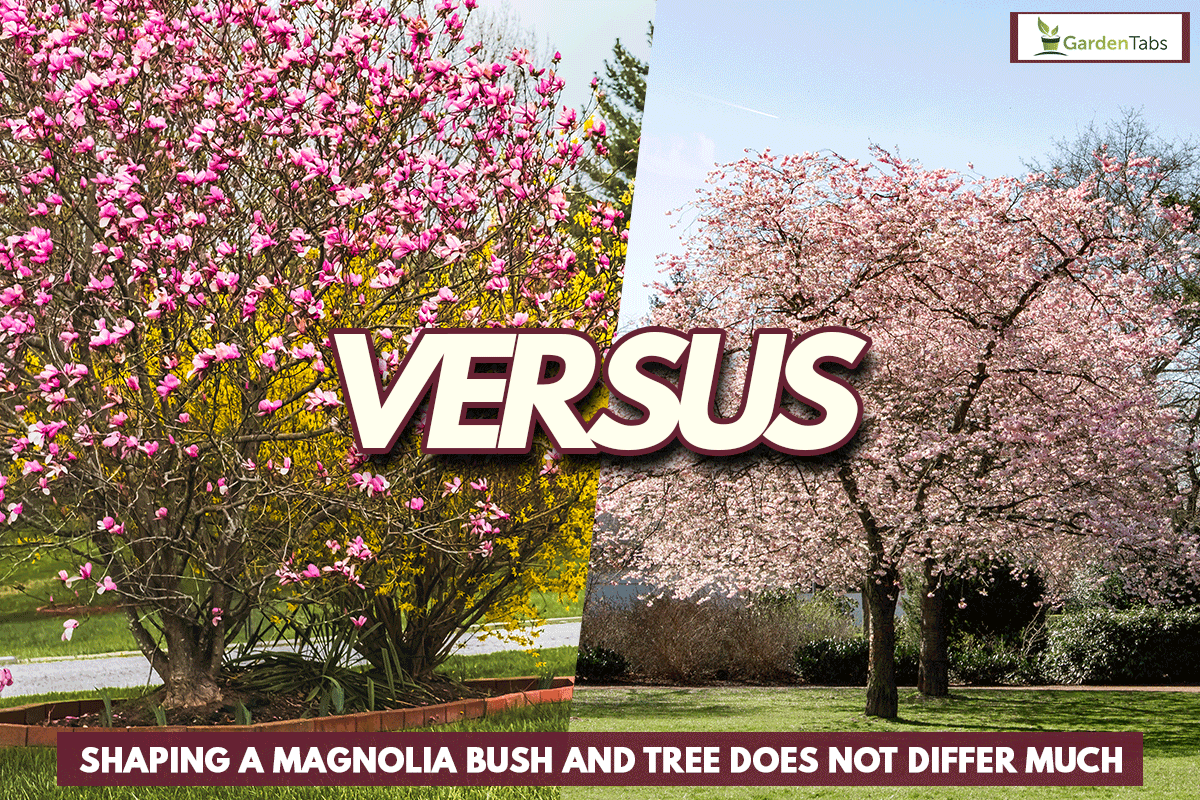
What Is Special About Magnolia?
Magnolia (Magnolia spp.) is both an evergreen and a deciduous plant. Although it originated from North and South America and Asia, people grow it around the globe these days. Likewise, it comes with at least 200 varieties. These species are valuable in gardening and local softwood, regardless of the climate.
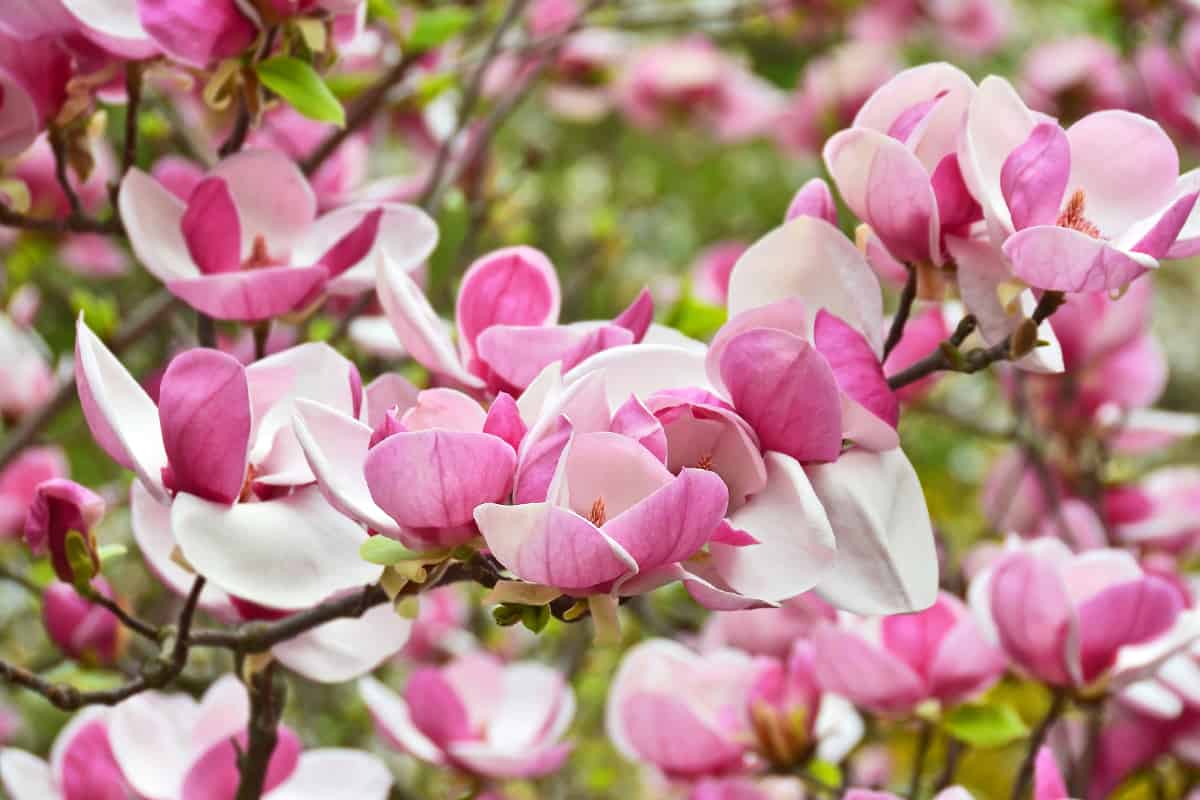
Meantime, this ancient flowering tree is one of the well-studied greeneries. It is also widely popular in history, arts, music, and literature, similar to the rose family.
For instance, because it symbolizes purity and nobility, it represents several places in the US and other regions, such as Mississippi, Louisiana, and North Korea, to name a few.
Basic Care For Magnolias
Below are the essential aspects you must know in taking care of a magnolia. Remember, the sizes, zones, and growth rates differ depending on the conditions and variants. The figures are only an estimate.
- Sowing Season: early spring
- Maturation Period: 10 to 20 years
- Average Lifespan: 80 to 120 years
- Soil Condition: well-draining; slightly acidic; clay, sand, or loam
- Light Exposure: full sun to partial shade
- USDA Hardiness Zones: 3 to 10
How Do You Identify A Magnolia?
Tapered crowns and smooth to scaly barks are a few of their typical features. Despite the multitude of variations, the defining characteristic of magnolias is visible in its blossoms and leaves.
Flowers
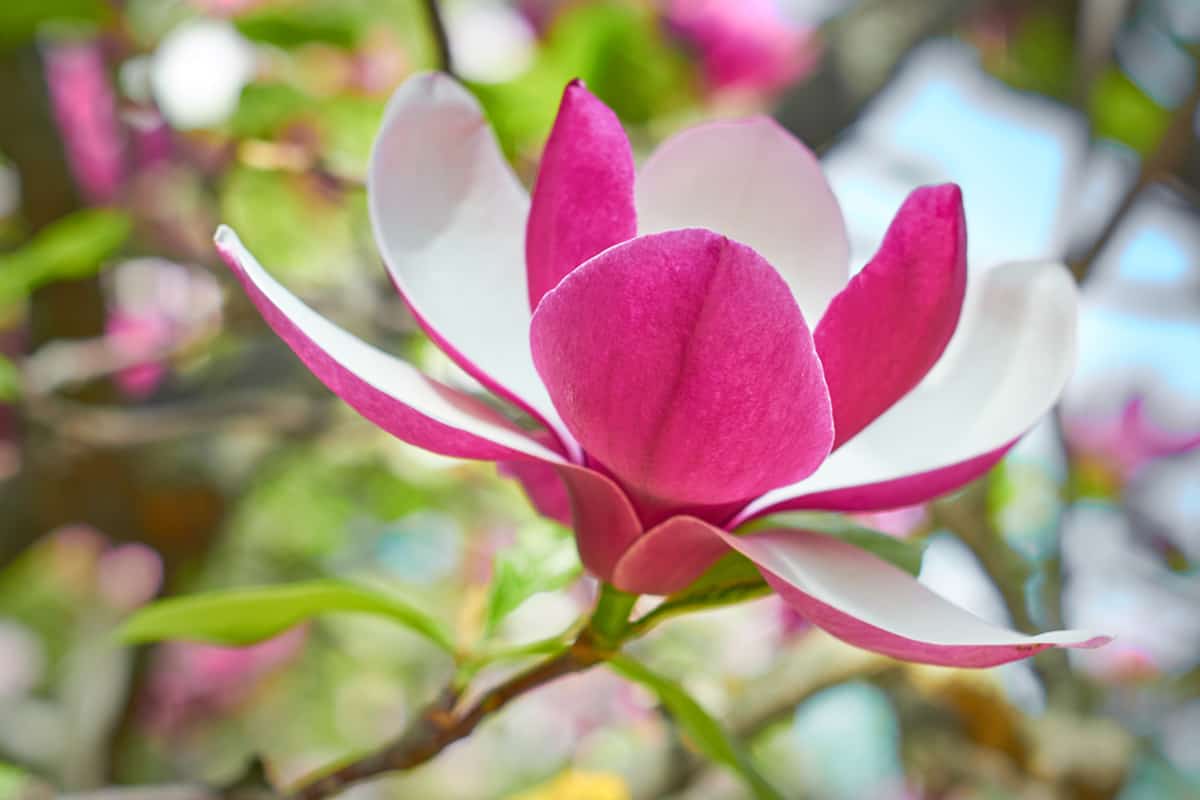
You can notice six to 12 petals per bud, either thin or wide. Along with the female and male (monoecious) parts, its unique blossoms have tepals, a combination of bracts and sepals.
Meantime, the blooming time is between March and July. The fragrant and sunken flowers vary from white, pink, purple, and yellow. Even though they do not provide nectar, bees still prefer their sweet smell. In return, pollination takes place.
Leaves
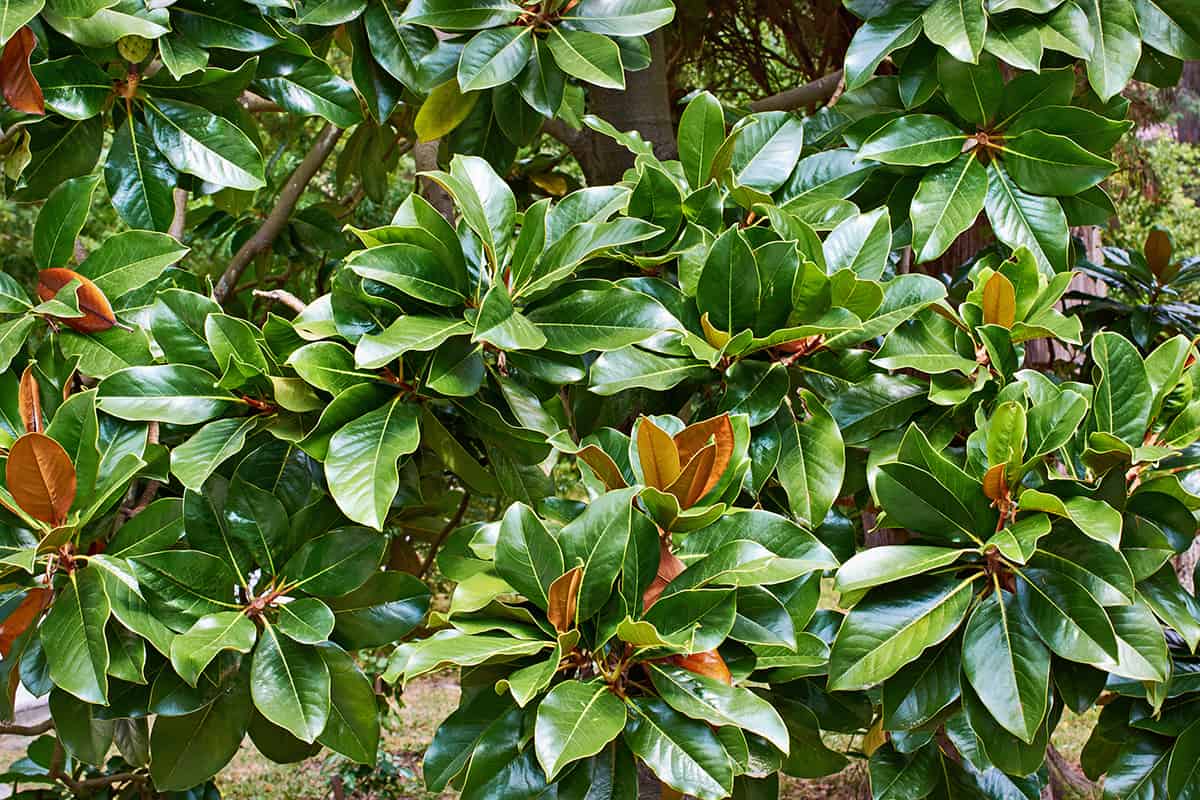
The oval-shaped leaves have an alternating arrangement and leather-like surface. They remain dark green throughout the year for evergreen magnolias, while others wilt during the fall and winter months.
We also have a helpful guide for magnolias' life cycle. So, to have more insights, check this article: How Long Do Magnolia Trees Live?
Magnolia Tree Vs. Magnolia bush
If you are wondering whether there is a difference between the magnolia tree and the bush, we will observe their characteristics closely.
Because they are essentially magnolias, they both need the same quality of sun exposure and soil needs. The distinction boils down to the height and number of stems of these plants.
Furthermore, define them as trees if magnolias are over 13 feet and extend upwards. For instance, the southern magnolia (Magnolia grandiflora) has an average height ranging from 60 to 80 feet, whereas the spread is 40 feet.
On the other hand, if they extend from the ground and possess an irregular round shape, you can tell they are bushes or shrubs. Likewise, they can almost touch the ground because of the thick foliage.
The lily (Magnolia lilifora) and saucer magnolia (Magnolia × soulangeana) are the best examples of this structure.
Nonetheless, horticulturists made it possible to grow the inherently large species in smaller spaces using different cultivars.
In terms of purpose, some plant enthusiasts raise magnolias as shrubs primarily for their flowers. When cultivated in groups, these sizes are also excellent for hedges to keep your privacy. Other magnolias mature into large-canopy trees, giving shades on sunny days.
Pruning
Like other trees and bushes, you must keep magnolias in shape. But, do it carefully because they cannot tolerate hard pruning. Otherwise, flowering will cease. Refrain also from tearing the bark. As a rule of thumb, shorten 1/3 or less of their original length.
Meanwhile, sanitize the pruning shears before trimming to avoid their risk of contracting a disease.
Shorten the bushes' water or vertical shoots back. The best time to prune is after the flowering season. Then, remove the stems at the bottom and the spent flowers. To keep it thick, pinch the branch tips. Finally, get rid of the intertwined disease branches.
In contrast, chop off the dead or infected branches once. The major pruning happens during the first blooming time. For the succeeding ones, perform it to control the spread or as needed, with at least a 2- to 3-year interval.
Can You Make A Magnolia Tree Into A Bush?
You can transform a magnolia tree into a bush. Based on a garden forum, cut the small branches of this tree annually or until it expands from the base. But, you can purchase small cultivars ideal for hedges.
Which Magnolia Is The Best?
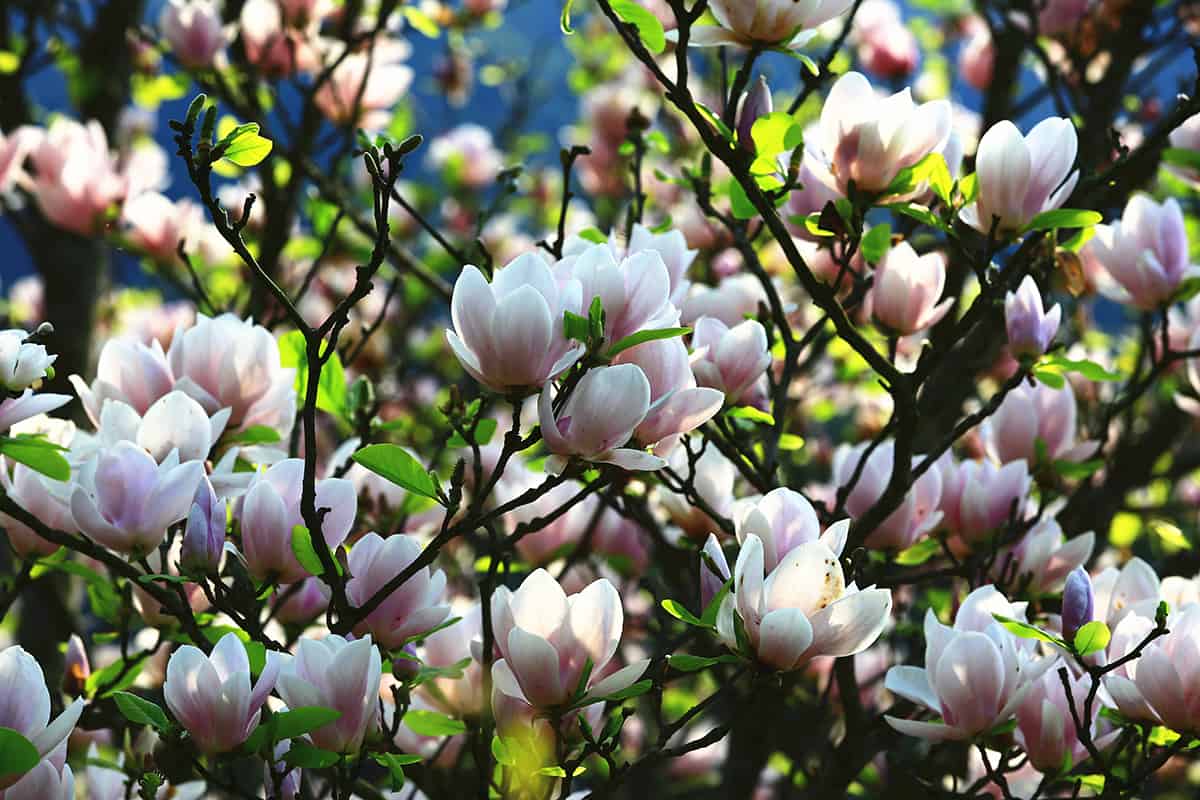
In addition to the hundreds of species, experts also developed several cultivars of magnolia.
Southern magnolia is a favorite in America. It has many cultivars like the "Little Gem" and "Teddy Bear." Moreover, if you own ample land, consider the yellow poplar (Liriodendron tulipifera). It is prevalent in forests and mountains.
In contrast, the dimensions of the star (Magnolia stellata) and sweetbay magnolia (Magnolia virginiana) are ideal for residential planting. You can opt for Loebner magnolia (Magnolia loebneri), a hybrid suitable for lawn borders, to appreciate the strengths of different species.
The list goes on, and it might overwhelm you. Hence, choosing the best species or cultivar will hinge on your location and desired aesthetics.
To know a short selection of magnolia's specific types, view this guide: 16 Types Of Magnolia Trees.
Do Magnolia Trees Have Invasive Roots?
Plant enthusiasts do not recommend growing magnolias near your house. Although its roots are non-invasive, they spread fast and consume space in your garden and below the ground. Thus, these trees must be pruned regularly and placed within the optimal distance.
To discover more about their roots, read this post: Are Magnolia Tree Roots Invasive? [And How To Remove Them].
Are Coffee Grounds Good For Magnolias?
Magnolias love the acidity of fresh coffee grounds like blueberries and hydrangeas. Although the used ones have neutral pH, they both carry essential nutrients.
What Are The Pros and Cons of Magnolias?
Assess whether you can tolerate their downsides as you reap their advantages
Advantages
Along with its beauty, you can enjoy these benefits while propagating them.
- They are commonly available in the market.
- They are drought-resistant, calling for minimum care.
- Beginners can grow magnolia because of their versatility.
- They appeal to migrating birds during flowering.
- The bold blooms add color to your home exterior.
- They offer several uses.
Disadvantages
Despite its benefits, you can experience problems while having magnolias in your yard. Thus, it is better to know them before it is on your plate, so you can prevent them from coming. Here are some of them:
- When mowing and weeding out, the thin bark can break quickly.
- They are susceptible to insect infestation (magnolia scale) on their woody parts: twigs, branches, and trunks.
- While insects are eating their sap, the honeydew drippings cause black fungus.
- Accumulation spider webs trigger yellow or red marks within the leaves.
- Some species like southern magnolias shed their leaves during windy days, producing mess in yards.
- Not all magnolias will readily bloom upon maturation.
Are Magnolia Plants Poisonous?
Magnolias are generally safe for human beings' consumption. Their leaves and flowers are edible and helpful in the culinary and medical worlds. However, its barks may pose a few risks, so consult your doctor before using any products with its extract.
Similarly, the American Society for the Prevention of Cruelty to Animals declared the star magnolia non-toxic to pets, especially cats, dogs, and horses. Other prestigious universities do not include any species of magnolia in their lists of poisonous plants.
Hence, your pets can eat these plants, but in moderation, like other foods.
What Are The Uses of Magnolia?
Apart from its shade, you can maximize every part of this ornamental plant: flowers, leaves, and bark.
- Animal food (squirrels and fowls)
- Chewing gum
- Construction (doors and furniture)
- Food plant
- Ginger-flavored salad
- Pickled flowers
- Sleep support pills
- Steamed vegetable (miso)
- Spice and condiment
- Tisane
- Toothpaste
- Traditional medicine (stress, allergies, and gingivitis)
What Plants Go With Magnolias?
Magnolias have allelopathic effects, meaning they release growth inhibitors when other plants live beside them. Nonetheless, you can still grow other greeneries if you do it strategically.
Their companions must have different flowering periods. As a result, it allows each plant to show off its visual and aromatic appeal. Aside from the flowers, deal also with the practicality of their maintenance and conditions for them to thrive.
Thus, try sowing these ideal companion plants under your magnolia tree or alongside the bushes.
- Begonias
- Camellias
- Cardinal flower
- Daffodils
- Ferns
- Hooked spur violet
- Hostas
- Hydrangea
- Irises
- Little false Solomon's seal
- Miner's lettuce
- Silverweed cinquefoil
- Spreading dogbane
- Woodland strawberry
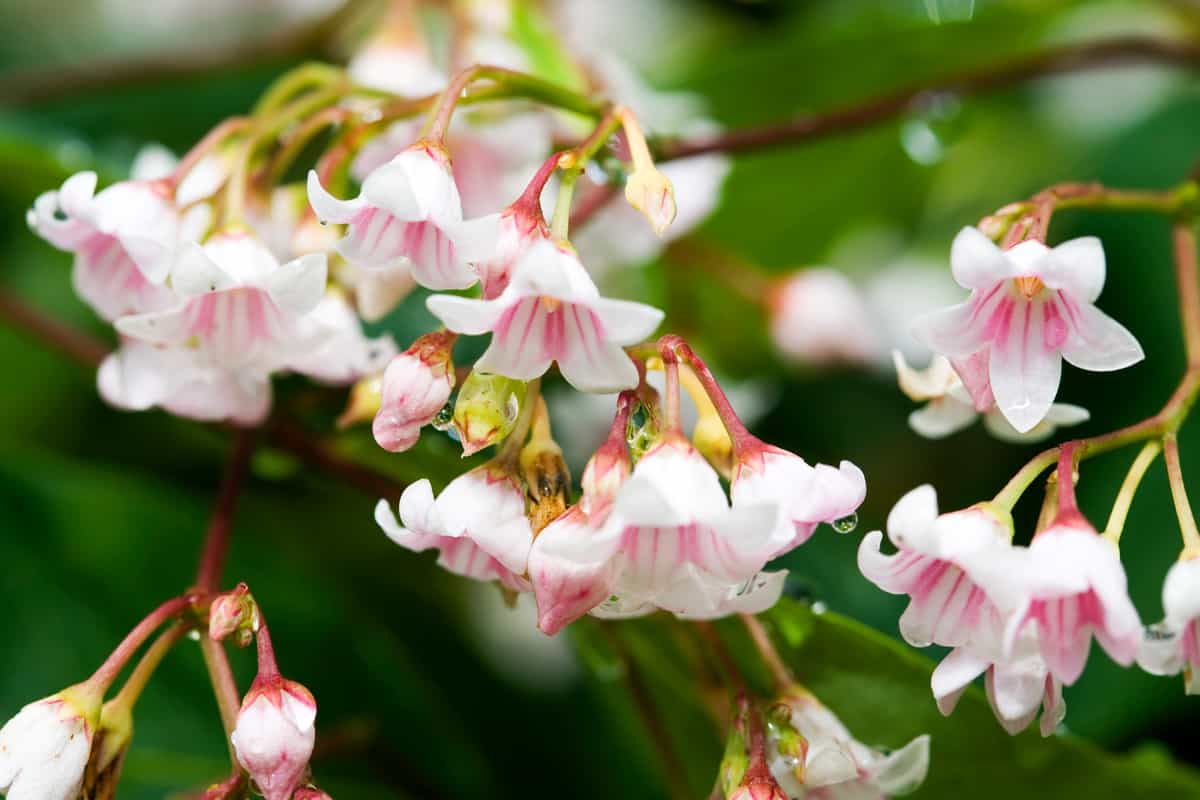
Final Thoughts
Whether a bush or tree, magnolias need shaping and regular maintenance. With proper care, you can take pride in their cultural significance, regardless of the species or cultivars.
Thanks for reading! If you enjoyed this post, explore these articles about magnolia care:
